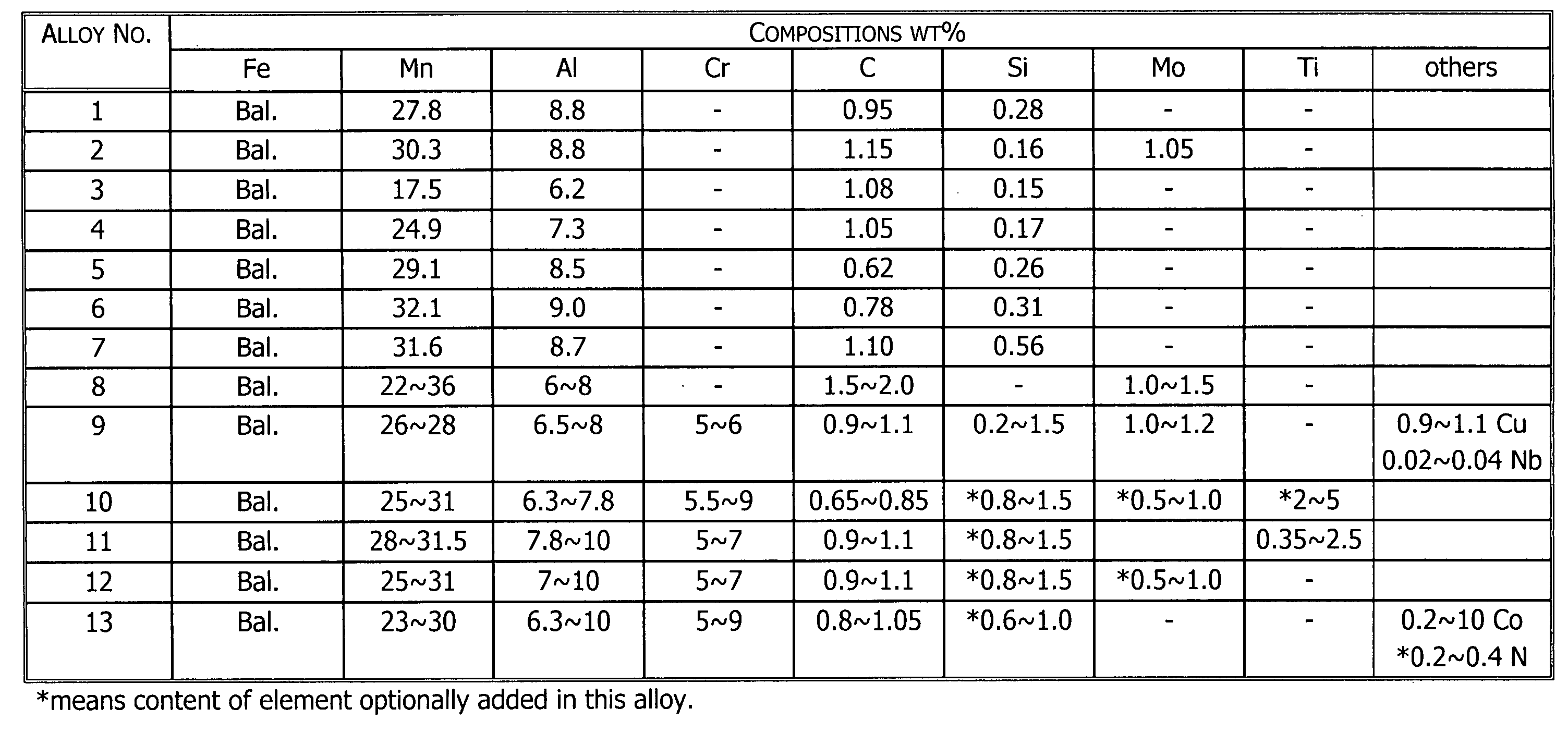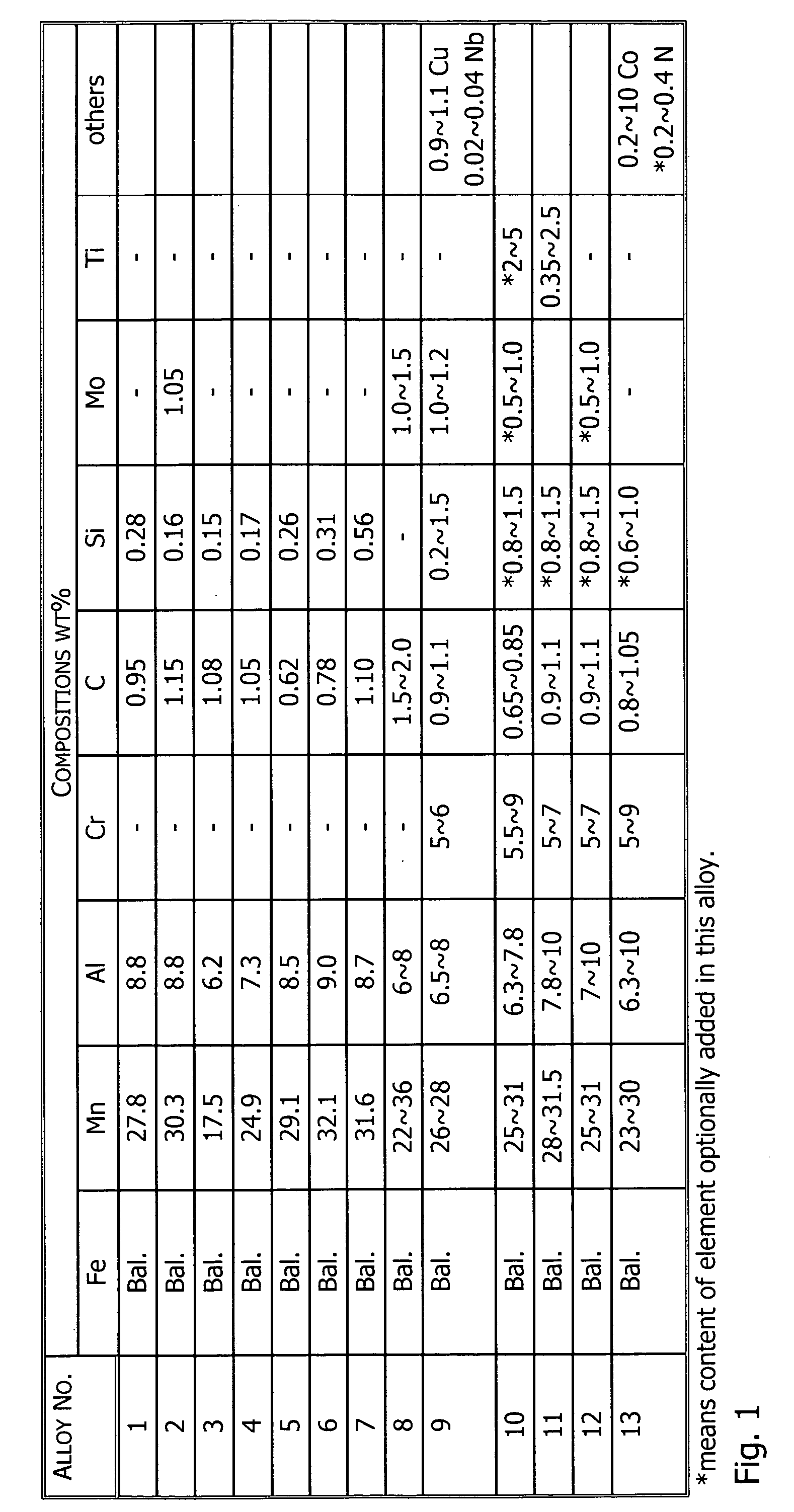High strength and high toughness alloy with low density and the method of making
a high-tensile, low-density technology, applied in heat treatment equipment, golf clubs, furnaces, etc., can solve the problems of sharp reduction of alloy ductility, and bcc disordered brittleness, so as to achieve high strength and ductility, reduce pits and defects, and increase the yield rate of products. remarkably
- Summary
- Abstract
- Description
- Claims
- Application Information
AI Technical Summary
Benefits of technology
Problems solved by technology
Method used
Image
Examples
Embodiment Construction
[0032]For a further understanding of the compositions and mechanical properties, in addition, objects, technical description, features, and effects of the present invention by those familiar in this field, the present invention is described with reference to the following embodiments, figures and tables.
[0033]The present invention relating to a high strength and high toughness alloy with a low density that is particularly useful for golf club heads, which comprises 15 to 33 wt % of manganese, 6 to 10 wt % of aluminum, 0.6 to 1.2 wt % of carbon, 0.1 to 1.0 wt % of silicon, with up to 1.5 wt % of molybdenum, and the balance of iron.
[0034]Following is a detailed description with reference to embodiments. As shown in FIG. 1, Alloys No.1-7 represent the alloys of the present invention, and No.8-13 represent the disclosed Fe—Mn—Al alloys applied to golf club heads in the prior arts which are listed as comparative examples as references to the present invention.
[0035]Alloy No.1: A preferab...
PUM
| Property | Measurement | Unit |
|---|---|---|
| Density | aaaaa | aaaaa |
| Density | aaaaa | aaaaa |
| Strength | aaaaa | aaaaa |
Abstract
Description
Claims
Application Information
 Login to View More
Login to View More - R&D
- Intellectual Property
- Life Sciences
- Materials
- Tech Scout
- Unparalleled Data Quality
- Higher Quality Content
- 60% Fewer Hallucinations
Browse by: Latest US Patents, China's latest patents, Technical Efficacy Thesaurus, Application Domain, Technology Topic, Popular Technical Reports.
© 2025 PatSnap. All rights reserved.Legal|Privacy policy|Modern Slavery Act Transparency Statement|Sitemap|About US| Contact US: help@patsnap.com


